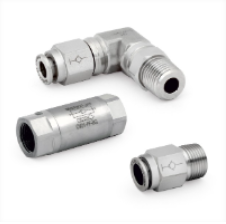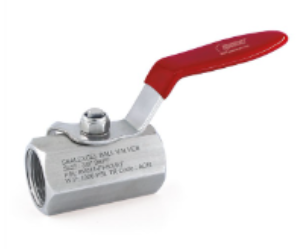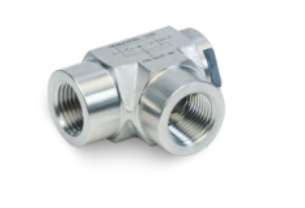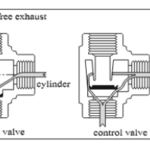
Control Valve: Quiet Superstars of Daily Life
April 26, 2024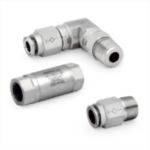
Pneumatic Fitting Names: Find Your Perfect Match
May 9, 2024Pneumatic pipe fittings are the untold heroes of the industrial world; they are essential to literally keeping the air moving! These fundamental parts, which are the factories of countless applications, guarantee a dependable and seamless connection within compressed air systems. Whether you work in manufacturing, construction, or just dabble in your garage workshop, knowing about Pneumatic Pipe Fittings can enable you to create air-powered systems that are both effective and efficient.
What are Pneumatic Pipe Fittings?
Pneumatic pipe fittings are essentially specialty connectors made for use in pressurized gas systems, which includes air systems. Pneumatic fittings provide priority to leak-proof connections at moderate pressure levels, in contrast to their hydraulic counterparts, which manage liquids at much higher pressures. By seamlessly connecting tubes, hoses, and pipes, these fittings guarantee that compressed air travels to its intended location effectively.
The world of pneumatic pipe fittings is incredibly diverse. To meet a range of demands, they are made of different materials, sizes, and shapes. Common variations consist of a few of the following:
- Push-to-connect fittings: Fast and tool-free hookups are possible with these user-friendly fittings. To create a tight seal, just press the tube or hose into the fitting until it clicks.
- Threaded fittings: By screwing the fitting onto a threaded pipe or hose barb, these conventional fittings provide a sturdy connection.
- Barbed fittings: The pointed end of these fittings has small cuts that grab the tube or hose and close it tightly.
- Quick-disconnect couplings: These fittings make it simple to connect and disconnect air lines, which is ideal in scenarios where regular tool replacements or maintenance are necessary.
Every kind of pneumatic pipe fitting has benefits, and the ideal option will vary depending on the use case. The process of making decisions involves considering several factors such as flow rate, reusability, convenience of installation, and pressure requirements.
Building Your Air Power Network: A Guide to Selecting Pneumatic Pipe Fittings
With your foundational knowledge of pneumatic pipe fittings now established, let’s move on to choosing the best ones for your project. The main points are broken out as follows:
- Pressure rating: Make sure the fittings you’ve chosen can withstand the system’s maximum pressure. Beyond the pressure rating, there may be damage, leaks, and even safety risks.
- Tube or hose size: Fittings are available in a range of sizes to fit the diameter of your hoses or tubing. Incorrect dimensions will cause leaks or limited airflow.
- Material compatibility: To prevent corrosion or weakening of the connection, take into account the material of your tubing or hoses and select fittings made of compatible materials.
- Flow direction: Certain flow directions are intended for the use of certain fittings. For the best possible system performance, pay special attention to these details.
- Reusability: Consider how frequently you’ll need to reconnect and disconnect parts. For frequent changes, quick-disconnect couplings might be the best option, but threaded fittings provide a more durable connection.
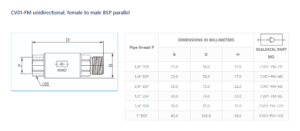
Applications of Pneumatic Pipe Fittings: A Breath of Fresh Air for Many Industries
Pneumatic pipe fittings find use in a wide range of sectors that depend on compressed air. A few examples are as follows:
- Manufacturing: FReliable airflow is essential to manufacturing processes, from powering pneumatic tools to controlling assembly line robots. Smooth functioning and effective compressed air utilization are guaranteed by pneumatic pipe fittings.
- Construction: Among the air-powered instruments frequently used in construction are impact tools, paint sprayers, and nail guns. These tools operate at their best, thanks to pneumatic pipe fittings.
- Automotive: In the automotive sector, compressed air is essential for everything from inflating tyres to running assembly line equipment. The dependable and effective movement of air across workshops and production lines is guaranteed by pneumatic pipe fittings.
- Food and Beverage: The food and beverage sector uses compressed air extensively in everything from bottling lines to conveying equipment. Pneumatic pipe fittings stop leaks and contamination, therefore upholding hygienic requirements.
- DIY and Hobbyists: Compressed air tools are useful even for beginners and do-it-yourself enthusiasts. For woodworking and home renovation operations, portable air compressors and air-powered instruments like brad nailers are frequently used. The safe and effective use of these tools in the home workshop is ensured by Pneumatic Pipe Fittings.
Breathe Easy with Reliable Pneumatic Pipe Fittings
Your compressed air systems will function at their best if you understand and choose the appropriate pneumatic pipe fittings. Many industries and applications rely heavily on these unsung heroes for their power.

